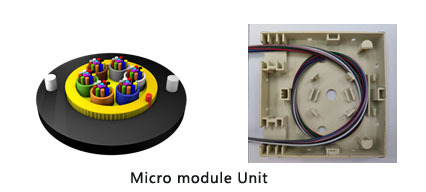5G era, opportunities and challenges coexist
2019 is the first year of China 5G commercial use. On April 8th, 2020, China Mobile, China Telecom, and China Unicom jointly held an online press conference and released the "5G Message White Paper", marking the official start of China 5G commercial use. While bringing new opportunities, 5G also brings new challenges to the "new infrastructure". Compared with the number of base stations in 4G era, the number of base stations in 5G era will increase several times. The huge number of small and micro base stations and the massive Internet of Things will absolutely increase the quantity of accesses. As the physical connection between the base stations, optical fiber cables will also surge in demand, and become the key to deployment in the early construction of the entire 5G network. Dr. Susan Crawford, from Harvard, wrote in his book “Fiber”, “The future of advanced wireless services depends entirely on the quantity of fibers.”

In the construction of optical communication networks, the continuous increase in the demand for optical fiber access leads to a substantial increase in the number of optical fibers accommodated in a single optical cable, and the volume of the optical cable also needs to be increased accordingly. On the other hand, the existing pipe network resources that carry the optical cable are relatively limited and restricted the volume of a single fiber optic cable, thus posing a huge challenge to the design and manufacture of conventional fiber optic cable products.
High density fiber micro module optical fiber cable has a great prospect
Along with the existing network expansion, pipeline network channel transformation and upgrading, and the rising comprehensive demand for new high-speed network construction such as data centers, high-rise buildings, large venues, and transportation hubs, the mainstream market's demand for higher density and larger core count optical fiber cable products is becoming stronger, and the new type optical fiber cables will develop in the direction of ultra-large core count, ultra-high density, and ultra-strong flexibility. The High density fiber micro module optical fiber cable is favored by European customers because of its construction convenience and small outer diameter. At present, most of the micro module fiber optic cable products which broadly used in the market are of 288 cores or less in the structure, and the core density is relatively low. In 2019, FiberHome's 432-core High density fiber micro module outdoor optical fiber cable was widely used in Europe. And in June 2020, one telecommunication company of Europe used FiberHome's 864-core, high-density, micro module optical fiber cable product.

The diameter of FiberHome’s self-developed 864-core micro module optical fiber cable is only about 22mm. The optical fiber assembly density is more than 1.25 times higher than that of the same type of traditional optical fiber cable with loose tube structure, 1.6 times higher than the optical fiber cable with ribbon structure. And that saves the pipe network resource mostly. FiberHome’s micro module unit is easy to strip, convenient to construction, and can effectively improve the construction efficiency; The tensile strength value of the product can reach more than 4000N, which fully ensures that the optical fiber cable will not be damaged by external tensile forces during the construction. This optical fiber cable meets the requirements of 110mm diameter bending and 220mm diameter U-shaped bending, ensuring that the optical fiber cable can calmly deal with various twists and turns in a complex pipe network environment, thereby fully guaranteeing communication quality. In the extreme cold environment of -40℃ and the high temperature environment of +70℃, this series of products can work in good working conditions, without fear of extreme weathers.
Located in Optical Valley, focusing on the world, continuing catching up with the world’s advanced level
At present, only a handful of international fiber optic cable suppliers have large-scale mass production capabilities for high fiber density fiber optic cables, and are in a market monopoly position. The actual fiber density of China’s current mainstream optical fiber cable with stranded loose tube structure and optical fiber cable with ribbon fiber structure still has a certain gap from the new products of advanced international manufacturer. The optical fiber cable with high-fiber-density structure made by some major domestic manufacturers are basically in their infancy, with low technological maturity, and both the scale of mass production and key indicators are still far behind the international leading level.
FiberHome used the FPD R&D management model, regarded the market and core technology as the driving force for product development, used the Common Basic Module (CBB) and platform as the shared technology foundation, and successfully finished the research and development of 864-core micro module optical fiber cables and also went into stable mass production through product lifecycle management (PLM) IT system. This achievement is an milestone in the development of China's high density optical fiber cable products, marking that China’s design and manufacturing level of ultra-high density micro module optical fiber cable has reached the world's advanced level. Facing with the domestic and international demand for “New Infrastructure” of 5G network infrastructure like data center, FiberHome will keep innovating unremittingly, and continue to challenge developing the larger core count, higher density optical fiber cable product. FiberHome will maximize the potential of the optical fiber cable and contribute to the Internet of Things together with customers.